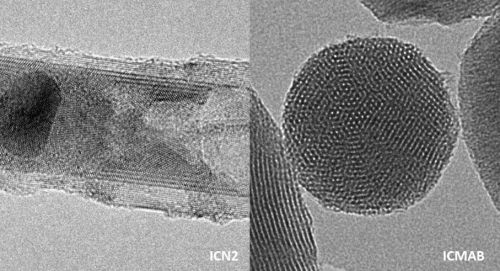
16/04/2020
Alba synchrotron: the double life of electrons
Alba synchrotron: the double life of electrons
Until now, in the Alba synchrotron, electrons had only one role: running at the speed of light inside the accelerator ring in order to produce a very special light, the synchrotron light. This light is collected in 8 different laboratories located around the accelerator (5 more by 2023) and is used by researchers to analyze the structure of materials at the atomic and molecular scales (remember: 250,000 atoms of aluminum are needed to form a 1 mm long single file…). And Alba has been working this way for 10 years! (See our news released on last April 2).
From 2022, in parallel, in a special room located inside the same building that houses the synchrotron, other electrons will not run to produce light but will be sent directly onto the material samples to produce other types of images that will also enable researchers to investigate materials at the atomic scale. The tool that uses electrons in this way is called an electron microscope and two of the best ones that currently exist (i.e., with the more penetrating look, so to speak) will be installed.
So, researchers will have at the Alba synchrotron two complementary tools to investigate the properties of materials: light from the synchrotron itself and electrons from the two electron microscopes. Depending on the type of scientific or technological problem to be solved, one or the other two techniques (or both) will be used. This concentration of expertise will be a great benefit to the scientific community here and around, making the Alba synchrotron an even more remarkable scientific infrastructure.
The future arrival of these two electron microscopes at Alba (one for materials science and one for biology) is mentioned now because ERDF funds (European Union) were announced last week: they will contribute to fund 50% of the total cost (about 6 million euros).
Further details are given in the press release sent by the Alba Synchrotron: precise characteristics of the two microscopes, role of all involved stakeholders, etc. In addition to the central role of the synchrotron itself, let’s highlight the research institutes located on the campus of the Autonomous University of Barcelona (UAB), our neighbor and partner: the UAB itself, the Catalan Institute of Nanoscience and Nanotechnology (ICN2) and the Institute of Materials Science of Barcelona (ICMAB-CSIC).
Congratulations!
From 2022, in parallel, in a special room located inside the same building that houses the synchrotron, other electrons will not run to produce light but will be sent directly onto the material samples to produce other types of images that will also enable researchers to investigate materials at the atomic scale. The tool that uses electrons in this way is called an electron microscope and two of the best ones that currently exist (i.e., with the more penetrating look, so to speak) will be installed.
So, researchers will have at the Alba synchrotron two complementary tools to investigate the properties of materials: light from the synchrotron itself and electrons from the two electron microscopes. Depending on the type of scientific or technological problem to be solved, one or the other two techniques (or both) will be used. This concentration of expertise will be a great benefit to the scientific community here and around, making the Alba synchrotron an even more remarkable scientific infrastructure.
The future arrival of these two electron microscopes at Alba (one for materials science and one for biology) is mentioned now because ERDF funds (European Union) were announced last week: they will contribute to fund 50% of the total cost (about 6 million euros).
Further details are given in the press release sent by the Alba Synchrotron: precise characteristics of the two microscopes, role of all involved stakeholders, etc. In addition to the central role of the synchrotron itself, let’s highlight the research institutes located on the campus of the Autonomous University of Barcelona (UAB), our neighbor and partner: the UAB itself, the Catalan Institute of Nanoscience and Nanotechnology (ICN2) and the Institute of Materials Science of Barcelona (ICMAB-CSIC).
Congratulations!
More news
15/10/2020
Parc de l'Alba in a WHO project
02/10/2020
The hydraulic barrier of Can Planas comes into operation
30/09/2020
SENER, the leading urban transport engineering company in Mexico
16/09/2020
Biogas injected into the natural gas grid: works begin!
23/07/2020
Catalan start-ups know how to attract funding
06/07/2020
The Barcelona Synchrotron Park joins the new WEDISTRICT EU program









